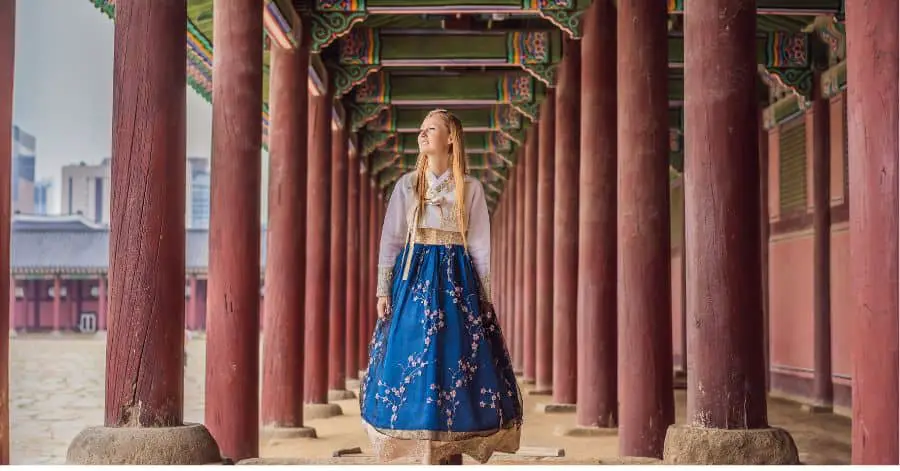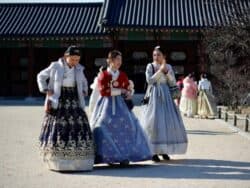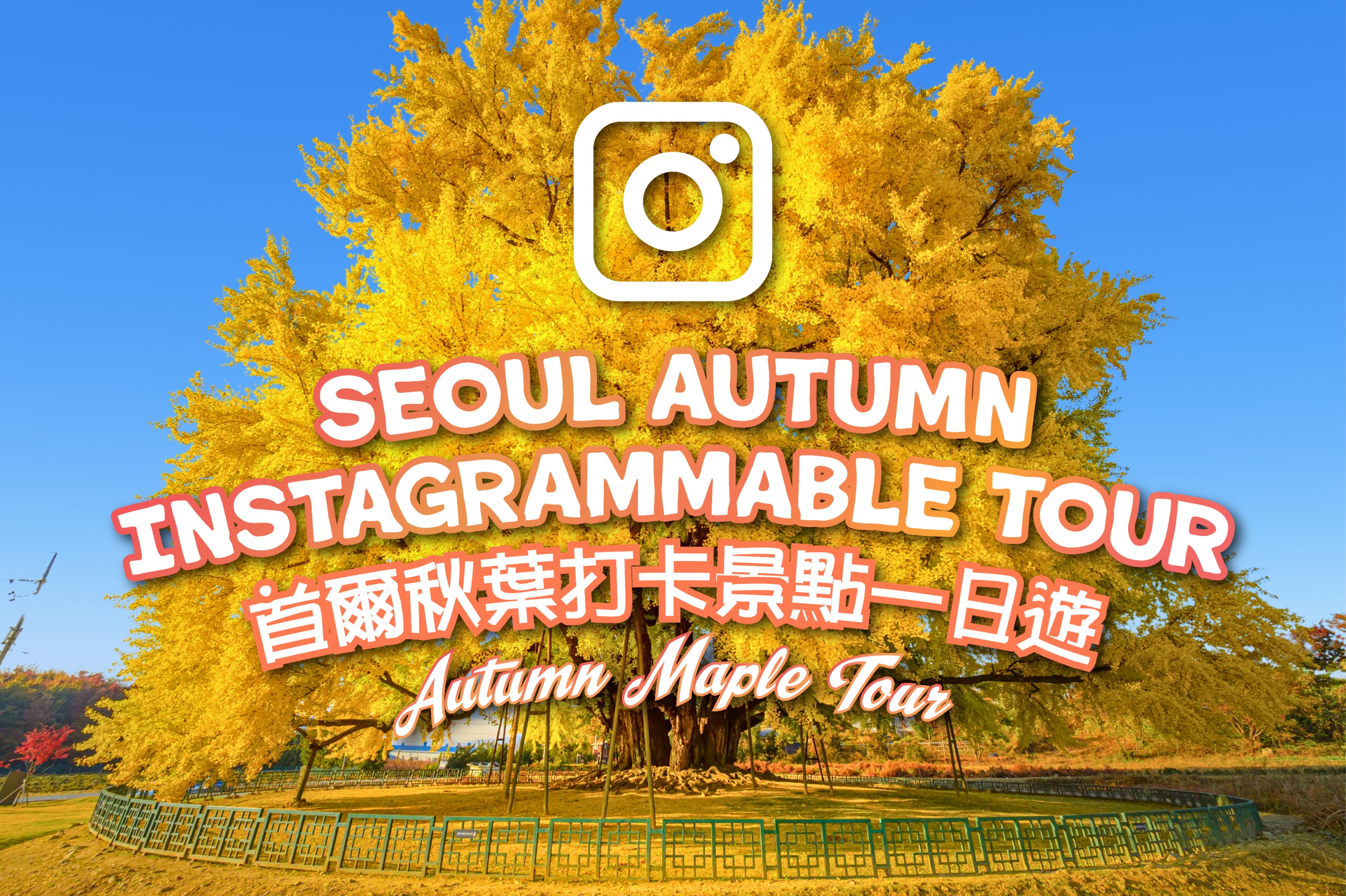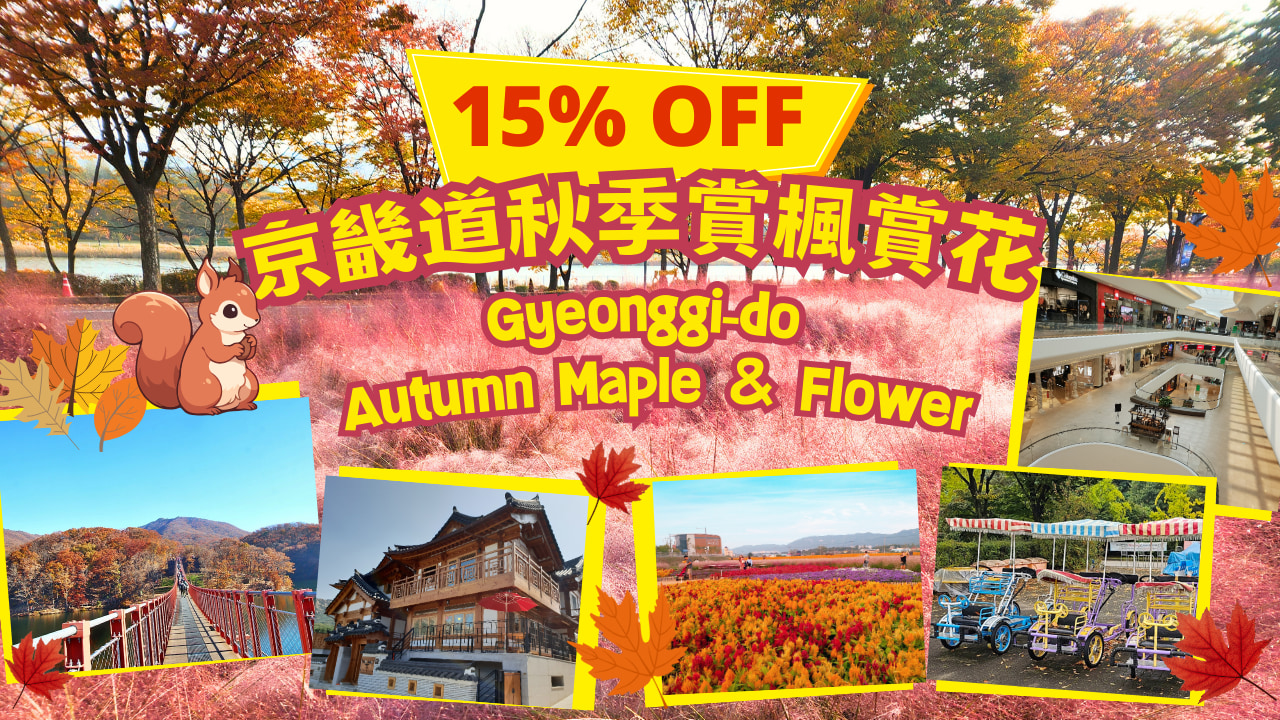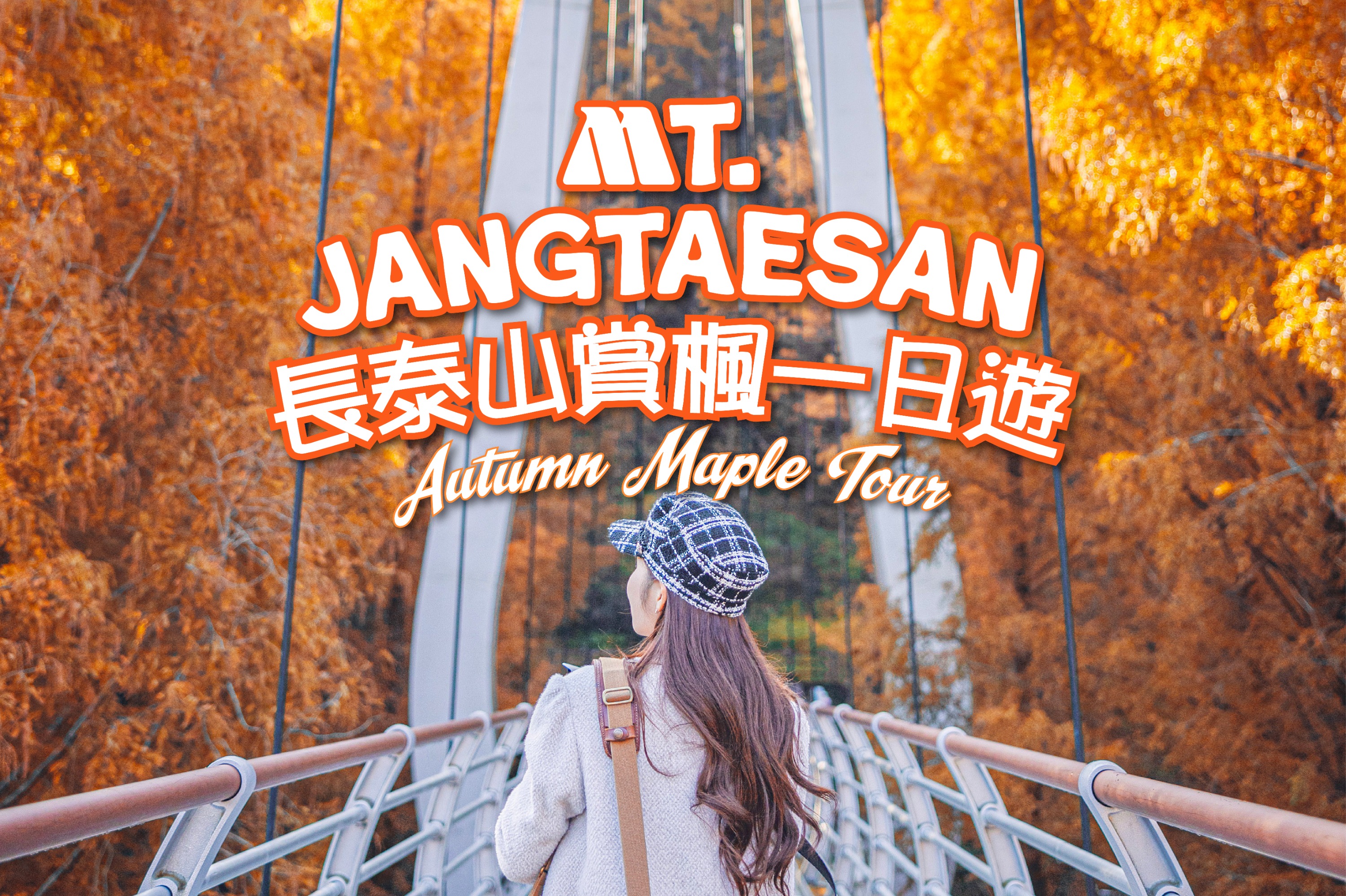The culture and societal structure in South Korea are truly unique combinations where tradition meets modernity. Steeped in a deep past that spans multiple centuries, Korean culture primarily embraces Confucianism, Buddhism, and Shamanism, which continue to influence their way of life and societal structures. Ingrained within its rich culture is a deep sense of community and the utmost respect for elders, which is evident in the hierarchy of social structures.
Yet despite the deep ties to its long history, the country has emerged in recent years as a global powerhouse in technology, electronics, and the growing popularity of Korean Pop culture and cinema. The cuisine is another celebrated factor, with dishes like Kimchi, tteokbokki, and bibimbap loved by people worldwide. Koreans are also famous for their strong work ethic, which has undoubtedly driven its powerful economy.
Read Also:
- Ultimate Korea Travel Guide!
- 100 Best Things To Do in Seoul
- Best 15 Tour Booking Websites in South Korea
- Things to Do for Fun: Unique Places to Visit in Seoul
A Brief History of South Korea
The history of South Korea is a long path through eras filled with Kingdoms, invasions, and massive transformations. Korea was home to numerous ancient dynasties, including the Goguryeo, Baekje, and Silla. These kingdoms flourished for years but were all united under the Goryeo Dynasty in the 9th century. The subsequent Joseon, which began in the late 14th century, brought significant cultural and societal transformations. It was a time of Confucian influence, harboring the development of a highly structured society and an emphasis on education.
Moreover, Korea’s history dramatically turned in the late 19th century with several invasions and conflicts. Japan’s conquest of Korea in 1910 marked a dark stage, lasting until the end of World War II. Additionally, the division of Korea into North and South post-World War II led to the devastating Korean War (1950-1953). This political conflict divided the once unified nation between the North and South. Towards the latter half of the 20th century, the country underwent rapid industrialization and huge economic growth. This essentially transformed South Korea into the global tech powerhouse it is today. Today, South Korea is an example of resilience and progress and continues to embrace its long traditional customs and history.
Language and Communication
Language and Communication are huge factors of the culture, representing its deep history. The Korean language uses Hangul, a phonetic script first introduced in the 15th century. Hangul is known for its logical and straightforward design, making it simple to understand compared to other complicated Asian languages. South Koreans highly prioritize efficient communication and respect in their speech. Honorifics, such as “씨” (ssi) and “님” (nim), are essential to reflect respect and encourage harmony in interactions. Understanding “jondaemal” (polite language) and “banmal” (casual language) is significant as it represents the relationships between people.
The Korean language is shaped similarly to how your mouth is shaped. Learn Korean for 10 minutes a day through Ling, a learning language app that will surely make your learning interactive and fun.
Furthermore, South Koreans often express themselves through non-verbal communication. Facial expressions, body language, and gestures are essential to effective communication. Maintaining eye contact while conversing is a sign of sincerity and respect. Bowing to elders or those deemed of higher societal status is also a common norm. In summary, communication plays a significant role in comprehending and merging into South Korean society.
Religion and Spiritual beliefs
Traditionally, Buddhism and Confucianism are two of the most prominent religions in the country. Since its introduction in the 4th century, Buddhism has been crucial in shaping Korean society and beliefs. Temples like Bulguksa and Seokguram, recognized as UNESCO World Heritage Sites, stand as a testament to the enduring legacy of Buddhism. Similarly, Confucianism has played a significant role in shaping Korea’s cultural identity. Its emphasis on moral ethics, order, and respect is noteworthy. Confucian practices are evident in family structures and educational and government systems.
Shamanism, or “mudang,” is also influential in Korean spirituality. Shamans represent a connection between the afterlife and the human world, practicing rituals to improve life and remove obstacles regarding health, relationships, and business success. These rituals often involve music, dance, and offerings to appease the spirits. More recently, Christianity has significantly influenced South Korea, with millions converting to Protestantism or Catholicism. In summary, South Korea’s spiritual identity is a diverse and harmonious landscape, merging cultural traditions and modern aspects, establishing a unique national identity and environment.
South Korean Cuisine
South Korea’s food culture is among the most popular cuisines worldwide, and it’s not surprising why. Korean food represents a delightful immersion of flavors, methods, and seasoning styles that have evolved over centuries. From mouth-watering kimchi to sublime grilled BBQ meats, Korean food is globally recognized and loved. Firstly, rice is the most important staple of Korean cuisine. The country has a long history of rice cultivation, and it remains an important part of almost every meal. Fusing different banchan (side dishes) with rice creates a unique mix of tastes.
Secondly, kimchi is more than just a side dish; it symbolizes Korean identity. This spicy fermented cabbage, seasoned with ingredients like garlic, ginger, and chili peppers, is served with virtually every meal. Moreover, there are over 180 different types of kimchi, each with its unique taste and ingredients. Furthermore, South Korea’s barbecue culture is a must-try experience. Known as “gogi-gui,” it involves grilling meat, usually beef or pork, at the table. Moreover, the tender, marinated slices of meat are often wrapped in lettuce leaves and dipped in flavorful sauces.
Korean cuisine showcases a wide variety of banchan, small side dishes, ranging from pickled vegetables to marinated tofu, which are integral to a Korean meal. They add diversity and complement the main dishes. Essentially, South Korean food is known for its bold and spicy flavors. Still, it also offers various dishes suitable for different tastes, including savory pancakes, hearty stews, and fresh seafood.
Basic Etiquette and Social Norms
Rooted in Confucianism, these customs emphasize respect, hierarchy, and harmony in interpersonal relationships.
- Respect and obedience to Elders: One of the most fundamental principles is showing the utmost respect to elders. Younger individuals are expected to use honorific language and bow lower when greeting or addressing seniors.
- Bowing: Bowing is a common form of greeting, and the depth of the bow depends on the level of respect or formality in a situation. A slight bow is typical in casual settings, while a deeper bow is reserved for more formal occasions.
- Exchanging Gifts: Gifts are an essential part of Korean culture and are given for various occasions. When offering or receiving a gift, it is polite to use both hands. Avoid using red ink or wrapping gifts in white, as these are associated with death.
- Dining Etiquette: During meals, wait for the eldest or most senior person to start eating before you begin. Use both hands when passing or receiving dishes; never point your fingers at others.
- Silence: Maintaining silence in public spaces like public transportation is considered polite. Loud conversations or phone calls in such places are generally frowned upon.
- Personal Space: South Koreans value personal space and tend to stand at arm’s length from each other in public. It’s essential to respect this boundary to avoid discomfort.
- Dress Code: Dress modestly, particularly when visiting temples or traditional places. Remove your shoes before entering someone’s home or certain restaurants.
Understanding and adhering to these basic etiquette and social norms in South Korea fosters smoother interactions and demonstrates respect for the country’s rich cultural heritage.
Traditional Clothing and Modern Fashion
Traditional clothing and modern fashion in South Korea reflect a fascinating blend of heritage and contemporary style. Hanbok, the traditional Korean attire, symbolizes the country’s rich cultural history. Hanbok typically consists of a loose-fitting top (jeogori), a wrap-around skirt (chima) for women, a short jacket (jeogori), and loose-fitting pants (baji) for men. These garments are often adorned with intricate embroidery and vibrant colors, representing different social statuses and occasions.
In recent years, there has been a resurgence of interest in hanbok, with designers incorporating modern elements to make it more accessible for everyday wear. This fusion of traditional and modern is often seen in contemporary fabrics, streamlined silhouettes, and bold patterns. On the other hand, South Korea’s modern fashion scene is thriving, with Seoul emerging as a global fashion hub. Korean pop culture, particularly K-pop, has greatly influenced fashion trends, with idols and celebrities setting the stage for innovative styles. The K-fashion industry is known for its avant-garde designs, streetwear-inspired looks, and a penchant for bold colors and patterns.
Korean Pop Culture
Korean Popular Culture has taken the global entertainment scene by storm in recent years. With its vibrant music, captivating dramas, and influential fashion trends, K-pop has transcended borders to become a cultural phenomenon.
At the heart of K-pop are its music groups, known for their catchy tunes, impressive choreography, and striking visuals. Acts like BTS, BLACKPINK, EXO, and TWICE have achieved international fame, amassing devoted fanbases worldwide. K-Pop’s unique fusion of various music genres, including pop, hip-hop, and EDM, has a universal appeal that transcends language barriers. Often characterized by intricate storytelling and talented actors, Korean dramas have also gained immense popularity. Series like “Descendants of the Sun” and “Crash Landing on You” have garnered widespread acclaim, introducing global audiences to Korean storytelling and culture.
Korean fashion and beauty trends have also left their mark globally. The “K-Beauty” phenomenon, emphasizing flawless skin and innovative skincare products, has revolutionized the beauty industry. Korean street fashion, characterized by a blend of tradition and modernity, has inspired fashionistas worldwide. In essence, Korean Pop Culture has become a dynamic force that connects people from different corners of the world, showcasing the creativity, talent, and rich cultural heritage of South Korea. Its impact continues to grow, making K-pop more than just entertainment; it’s a cultural bridge that fosters connections and appreciation on a global scale.
Korean Technology and Innovation
Korea’s technology and innovation landscape is a testament to the country’s strong work ethic and unique cultural values. South Korea, in particular, has emerged as a global tech powerhouse driven by a relentless commitment to excellence and a culture deeply rooted in diligence. Korean work ethic is characterized by long hours, dedication, and a pursuit of perfection. Employees often work late into the evening, and weekends are not uncommon, reflecting their unwavering determination to excel. This diligence extends to education, strongly emphasizing STEM (Science, Technology, Engineering, and Mathematics) fields, producing a highly skilled workforce.
A blend of tradition and modernity fosters a culture of innovation in Korea. Confucian values, emphasizing respect for authority and teamwork, influence workplace dynamics. However, this coexists with a hunger for progress and adaptability, as seen in the rapid adoption of cutting-edge technologies like 5G and artificial intelligence. Korean tech giants like Samsung, LG, and Hyundai are globally recognized for their innovation, fueled by a relentless pursuit of excellence and a work culture that values collaboration and continuous learning. In Korea, technology and innovation are not mere buzzwords but a way of life driven by a deep-seated work ethic and a commitment to shaping the future.
Family
Family is central and cherished in South Korean culture, reflecting the country’s deep-rooted Confucian values and traditions. South Korea’s family structure is typically hierarchical and strongly emphasizes filial piety, respect for elders, and collective well-being.
The traditional family unit, known as “yangban,” often includes three or more generations living together under one roof. Elders are highly respected and hold significant authority within the family, making important decisions and providing guidance. This respect is not limited to immediate family but extends to ancestors, with ancestral rites being common. The family culture also involves strong bonds between siblings and cousins, who often maintain close relationships. Elders are pivotal in passing down cultural values, customs, and educational expectations to the younger generation.
Family gatherings and celebrations are a vital part of South Korean life. Festivals like Chuseok (harvest festival) and Seollal (Lunar New Year) bring families together for special meals and rituals, reinforcing the importance of kinship. While modernization has brought changes to family dynamics, with more nuclear families and a growing focus on individualism, the core values of respect for elders and the significance of family ties remain deeply ingrained in South Korean society.
Traditional Holidays
Traditional holidays in South Korea are deeply rooted in the country’s rich cultural heritage and offer a captivating glimpse into its history and customs. One of the most significant celebrations is Seollal, the Korean Lunar New Year. Families come together to pay respects to their ancestors through ancestral rites, share delicious traditional dishes like tteokguk (rice cake soup), and play traditional games like yutnori. Chuseok, often called Korean Thanksgiving Day, is another cherished holiday. Celebrated in autumn, Chuseok is a time for families to gather again, offering gratitude for the year’s harvest. Preparations include making songpyeon, a special rice cake, and performing ancestral rites.
“Seokga Tansinil,” also known as the Buddha’s birthday, is another holiday widely celebrated nationwide. The day is filled with colorful lantern parades, temple visits, and acts of kindness to gain good merit and karma. It’s when South Koreans come together to reflect on Buddhist teachings and spread goodwill. Many traditional holidays like ‘Dano,’ ‘Chilseok,’ and ‘Hansik’ are also celebrated, each with unique rituals and customs. These age-old occasions offer a chance to honor Korea’s deep history and serve as a connection for the new and old generations. This reinforces the significance of family, community identity, and cultural conservation in a rapidly modernizing South Korea.
IVK’s Top Picks – Day Tours, Tickets, and Travel Activities
Seasonal Picks!😍


